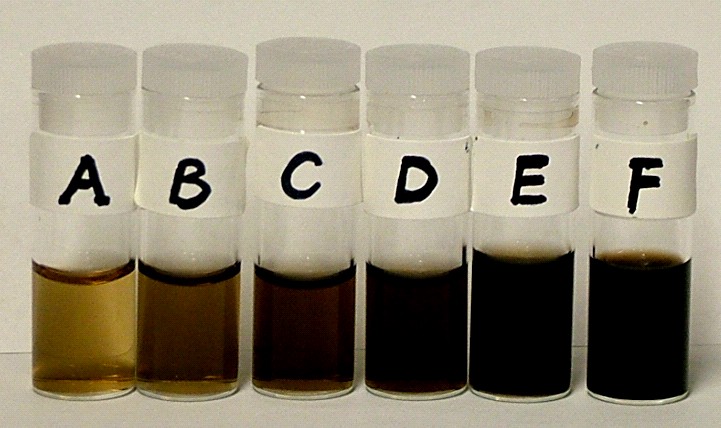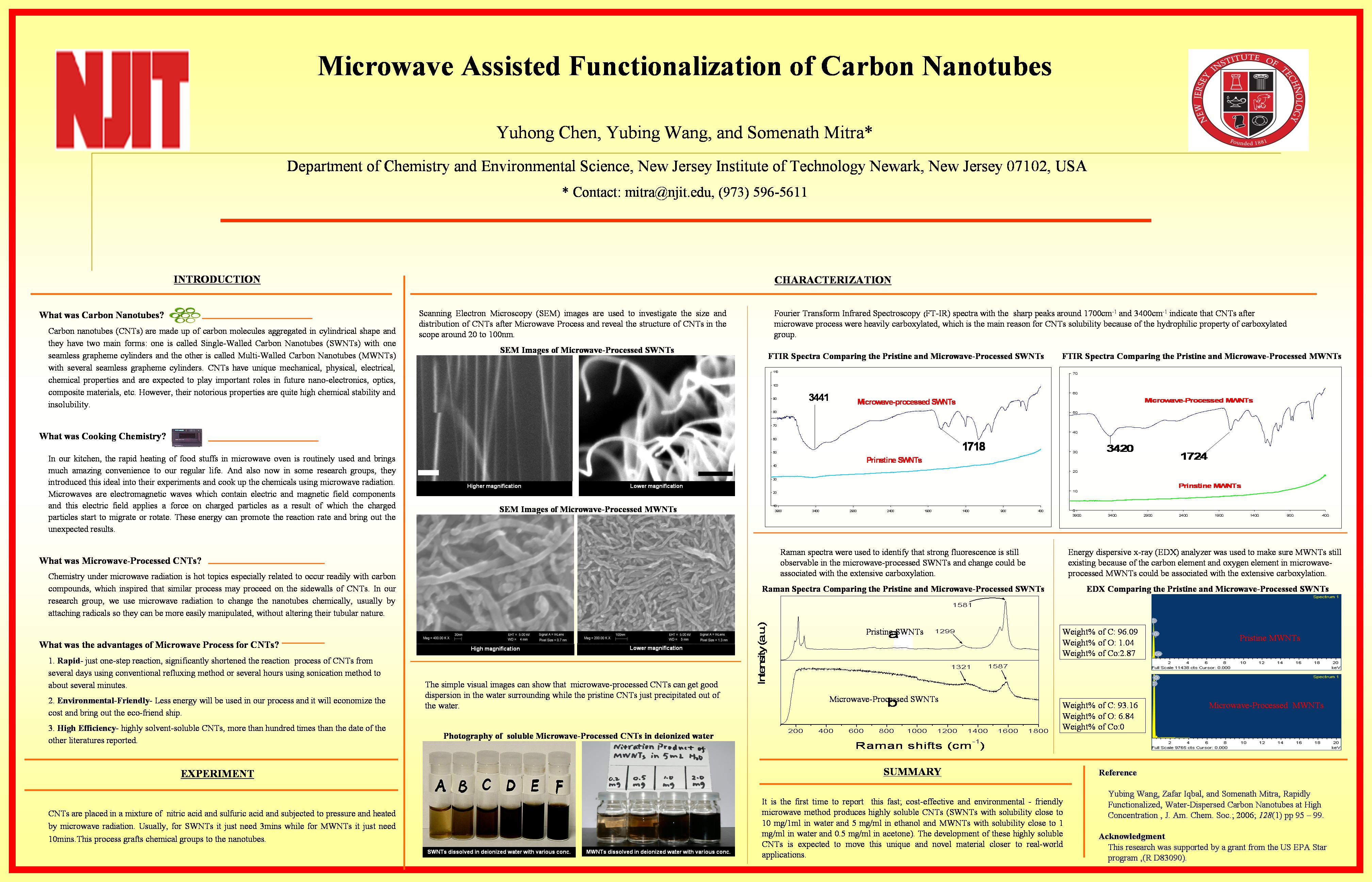
Rapidly Functionalized and Solvent Dispersible Carbon Nanotubes
Microwave-assisted functionalization of single wall carbon nanotubes (SWNTs) in a mixture of nitric and sulfuric acid was carried out to synthsize highly water soluble nanotubes. Solubilities as high as 10 mg/ml was obtiend in de-ionized water, which was nearly two orders of magnitude higher than those previously reported. This was after only three minutes of reaction. Fourier-transform infrared spectra showed the presence of carboxylated (-COOH) and acid sulfonated (-SO2.OH or -SO3- H+) groups on the SWNTs. Based on elemental analysis, it was estimated that one out of three carbon atoms was carboxylated, while one out of ten carbon was sulfonated. The Raman spectra taken both in aqueous solution and in the solid phase indicated charge transfer from the SWNT backbone to the functional groups. This is the first time that the Raman spectrum of SWNTs in a solution phase has been reported. Scanning electron microscope images of thin films deposited from an aqueous solution showed debundled SWNTs aligned parallel to one another on the substrate. The images also indicated reduction in average length of the nanotubes. Compared to the starting nanotubes, the microwave processed SWNTs were found to contain significantly less amount of the original iron catalyst. It is expected that the microwave technique will now enable rapid functionalization of SWNTs in bulk quantities that will likely hasten a wide range of applications.
Water Soluble Nanotubes: Solubilities as high as 10 mg/ml in de-ionized water is obtained, which is nearly two orders of magnitude higher than those previously reported. This was after only three minutes of reaction. Fourier-transform infrared spectra showed the presence of carboxylated (-COOH) and acid sulfonated (-SO2.OH or -SO3- H+) groups. It is estimated that one out of three carbon atoms was carboxylated, while one out of ten carbon was sulfonated. The Raman spectra taken both in aqueous solution and in the solid phase indicated charge transfer from the SWNT backbone to the functional groups. This is the first time that the Raman spectrum of SWNTs in a solution phase has been reported. Scanning electron microscope images of thin films deposited from an aqueous solution showed debundled SWNTs aligned parallel to one another on the substrate.
References:
1. “Rapidly functionalized and highly water-soluble carbon nanotubes”. Yubing Wang, Zafar Iqbal and Somenath Mitra. Journal of Am. Chem. Soc. 43 1015-1020, (2006).
2. “Microwave-induced rapid chemical functionalization of single-walled carbon nanotubes.” Yubing Wang, Zafar Iqbal and Somenath Mitra. Carbon, 43 1015-1020, (2005).

Figure 1. Photographs of SWNT dispersions of various concentrations in deionized water: (A) 0.05mg/ml, (B) 0.1 mg/ml, (C) 0.2 mg/ml, (D) 0.3 mg/ml, (E) 0.5 mg/ml and (F) 2 mg/ml.
